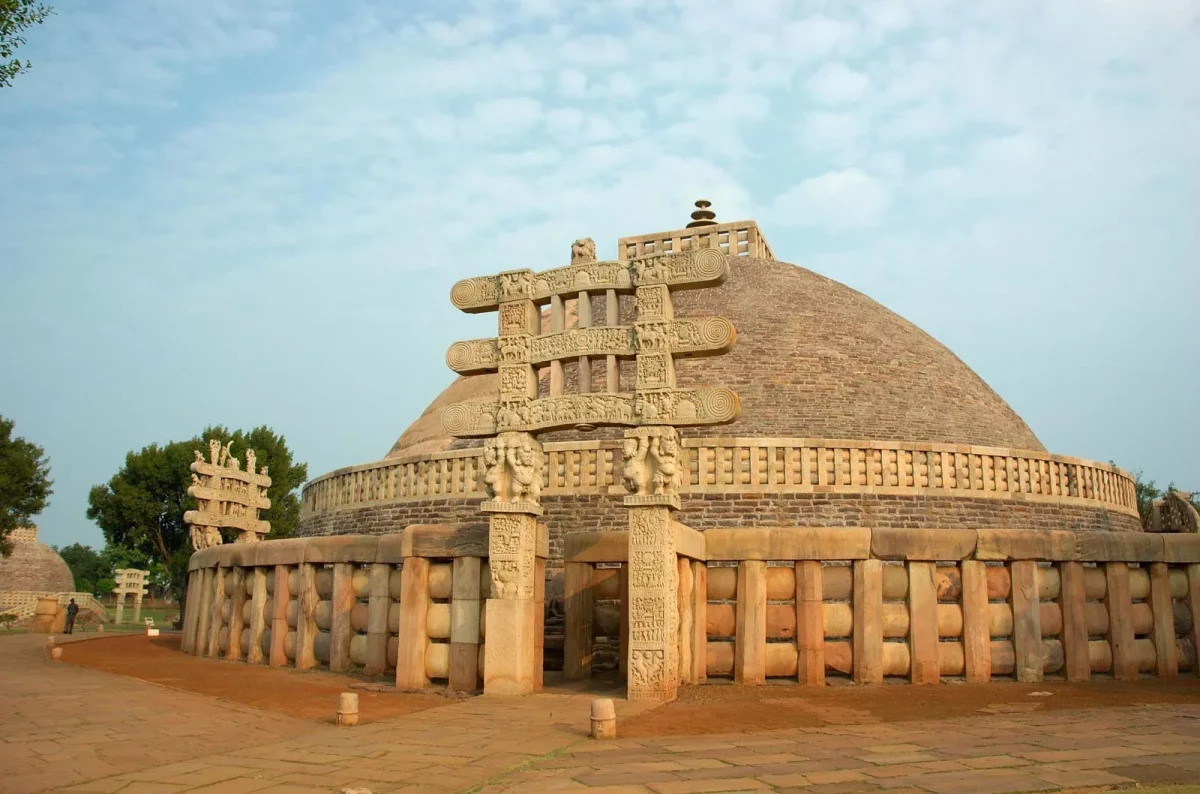Introduction:
Nestled amidst the lush green landscape of Madhya Pradesh, India, lies the serene town of Sanchi. Though seemingly unassuming, Sanchi holds within its borders a treasure trove of ancient Buddhist monuments that have stood the test of time. These architectural marvels, dating back over two thousand years, showcase the profound influence of Buddhism and offer a window into India’s rich cultural and religious heritage. Let’s embark on a journey to explore the Buddhist monuments at Sanchi and unravel the history and significance they hold.
The Great Stupa:
At the heart of Sanchi stands the majestic Great Stupa, a colossal hemispherical dome that stands as a symbol of Buddhist art and architecture. Originally constructed by Emperor Ashoka in the 3rd century BCE, it served as a hub of Buddhist worship and pilgrimage. The structure, made entirely of stone, is adorned with intricately carved gateways called toranas. These toranas depict various scenes from the life of Buddha, showcasing the masterful craftsmanship of the artisans of that era.
The Toranas:
The toranas of the Great Stupa are a visual delight, showcasing the evolution of early Buddhist art. The carvings depict episodes from the Jataka tales, which narrate the previous lives of Gautama Buddha. Each torana tells a story, offering a glimpse into the teachings and virtues of Buddhism. The exquisite detailing and the expressive sculptures make these gateways an epitome of the mastery of ancient Indian sculptors.
The Ashoka Pillar:
Standing tall near the Great Stupa is the famous Ashoka Pillar, bearing inscriptions by Emperor Ashoka himself. These inscriptions, written in Brahmi script, provide valuable historical information and reveal Ashoka’s conversion to Buddhism. The pillar, made of polished sandstone, is crowned with a magnificent lion capital, which is now the national emblem of India. The elegant simplicity and the message of peace embodied in the Ashoka Pillar remain timeless.
The Monastery Complex:
Apart from the Great Stupa, Sanchi is also home to several monasteries and temples that were added to the site over the centuries. The monasteries, known as viharas, served as residences for the Buddhist monks. The Gupta period temple, dedicated to Buddha, is one such remarkable structure within the complex. The ornate carvings and the serene atmosphere within the monastery complex make it an ideal place for meditation and introspection.
Preservation and UNESCO World Heritage Site:
Sanchi and its magnificent Buddhist monuments were rediscovered and extensively restored in the 19th century by British archaeologists. Recognizing their cultural and historical significance, the site was designated as a UNESCO World Heritage Site in 1989. The meticulous preservation efforts have ensured that visitors from across the globe can experience the timeless beauty and spiritual essence of Sanchi.
Conclusion:
A visit to the Buddhist monuments at Sanchi is not just a journey through time but also a profound spiritual experience. The serene ambiance, the awe-inspiring architecture, and the intricate carvings transport visitors to an era where Buddhism flourished in India. Sanchi serves as a powerful reminder of the teachings of compassion, peace, and enlightenment espoused by Gautama Buddha. It stands as a testament to the enduring legacy of Buddhism and its enduring influence on Indian culture. So, immerse yourself in the tranquility of Sanchi, and let the ancient whispers of wisdom echo through your soul.
